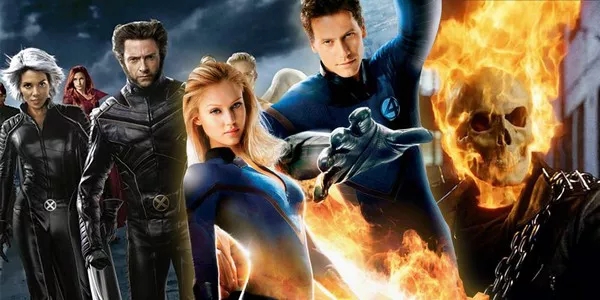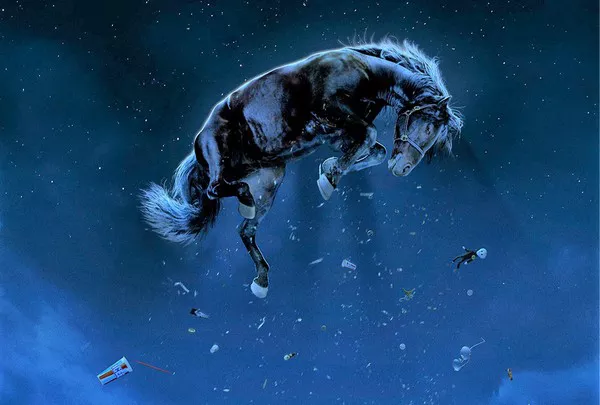Marvel Studios has created an expansive and interconnected cinematic universe that has captivated audiences worldwide. With a plethora of superhero films, spin-offs, and TV shows, newcomers and die-hard fans alike often find themselves pondering the best way to experience the Marvel Cinematic Universe (MCU) in its entirety. The order in which one watches these movies can significantly impact the overall viewing experience, as it can enhance the understanding of character arcs, plot developments, and the larger narrative. In this article, we will explore various viewing sequences, including both chronological and release order, to help you decide what might be the best approach for your Marvel movie marathon.
1. Release Order: Witness the Evolution
The Birth of the MCU
The MCU began with the release of “Iron Man” in 2008, directed by Jon Favreau and starring Robert Downey Jr. as Tony Stark. This marked the inception of the MCU and set the stage for what would become a massive superhero franchise.
Phase by Phase
The release order follows the order in which the films hit theaters, divided into phases. Each phase contains a series of interconnected films, building up to a culminating event. Watching the movies in this sequence allows you to experience the evolution of the MCU, witnessing the introduction of new heroes, iconic team-ups, and the progression of overarching storylines.
Embrace the Post-Credits Scenes
One significant advantage of watching the films in release order is experiencing the post-credits scenes in the way they were originally intended. These scenes often provide teasers, Easter eggs, and hints about future movies, adding to the excitement and anticipation of what’s to come.
The Release Order Sequence
Iron Man (2008)
The Incredible Hulk (2008)
Iron Man 2 (2010)
Thor (2011)
Captain America: The First Avenger (2011)
The Avengers (2012)
Iron Man 3 (2013)
Thor: The Dark World (2013)
Captain America: The Winter Soldier (2014)
Guardians of the Galaxy (2014)
Avengers: Age of Ultron (2015)
Ant-Man (2015)
Captain America: Civil War (2016)
Doctor Strange (2016)
Guardians of the Galaxy Vol. 2 (2017)
Spider-Man: Homecoming (2017)
Thor: Ragnarok (2017)
Black Panther (2018)
Avengers: Infinity War (2018)
Ant-Man and The Wasp (2018)
Captain Marvel (2019)
Avengers: Endgame (2019)
Spider-Man: Far From Home (2019)
2. Chronological Order: Unravel the Timeline
Piecing Together the MCU Timeline
Watching the movies in chronological order takes you on a journey through the MCU’s history, starting with the earliest events and progressing toward the most recent. This sequence can provide deeper insights into character origins, historical context, and how various plotlines intersect.
The Time-Bending Challenge
It’s worth noting that while the chronological order provides a unique perspective on the MCU, some films, such as “Captain America: The First Avenger,” “Guardians of the Galaxy Vol. 2,” and “Doctor Strange,” involve time travel or flashbacks, disrupting a strictly linear narrative.
The Chronological Order Sequence
Captain America: The First Avenger (1942 – 1945)
Captain Marvel (1995)
Iron Man (2010)
Iron Man 2 (2011)
The Incredible Hulk (2011)
Thor (2011)
The Avengers (2012)
Iron Man 3 (2012 – 2013)
Thor: The Dark World (2013)
Captain America: The Winter Soldier (2014)
Guardians of the Galaxy (2014)
Guardians of the Galaxy Vol. 2 (2014)
Avengers: Age of Ultron (2015)
Ant-Man (2015)
Captain America: Civil War (2016)
Black Widow (2016)
Doctor Strange (2016 – 2017)
Black Panther (2017)
Spider-Man: Homecoming (2017)
Thor: Ragnarok (2017)
Ant-Man and The Wasp (2017)
Avengers: Infinity War (2018)
Avengers: Endgame (2018 – 2023)
Spider-Man: Far From Home (2023)
3. Hybrid Order: The Best of Both Worlds
Striking a Balance
For some fans, choosing between release order and chronological order can be a daunting task. The hybrid order seeks to strike a balance between the two, offering a compromise that maintains the narrative coherence while also preserving the surprises and reveals of the original release order.
Phases and Interconnected Stories
In this hybrid sequence, you start with Phase One and follow the release order within each phase, then switch to chronological order when moving from one phase to another. This way, you get the best of both worlds, experiencing the overarching narrative as intended by Marvel Studios while also witnessing the historical progression of events.
The Hybrid Order Sequence
Iron Man (2008)
The Incredible Hulk (2008)
Iron Man 2 (2010)
Thor (2011)
Captain America: The First Avenger (2011)
The Avengers (2012)
Captain Marvel (1995)
Iron Man 3 (2012 – 2013)
Thor: The Dark World (2013)
Captain America: The Winter Soldier (2014)
Guardians of the Galaxy (2014)
Guardians of the Galaxy Vol. 2 (2014)
Avengers: Age of Ultron (2015)
Ant-Man (2015)
Captain America: Civil War (2016)
Black Widow (2016)
Doctor Strange (2016 – 2017)
Black Panther (2017)
Spider-Man: Homecoming (2017)
Thor: Ragnarok (2017)
Ant-Man and The Wasp (2017)
Avengers: Infinity War (2018)
Avengers: Endgame (2018 – 2023)
Spider-Man: Far From Home (2023)
4. TV Shows: Expanding the MCU
The Rise of Marvel TV
The MCU is not limited to the big screen alone; it has also made a significant impact on the world of television. Marvel TV shows, often released on streaming platforms like Disney+, contribute to the overall narrative and character development, making them essential for a complete MCU experience.
Incorporating the TV Shows
Integrating TV shows into your viewing sequence can be a bit trickier, as their release dates might overlap with the movies or fall within specific timelines. For the most immersive experience, consider watching the shows in a combination of release and chronological order, placing them in their respective phases.
Key TV Shows and Their Placement
WandaVision (2021) – After “Avengers: Endgame”
The Falcon and The Winter Soldier (2021) – After “Avengers: Endgame”
Loki (2021) – After “Avengers: Endgame”
What If…? (2021) – After “Avengers: Endgame”
Hawkeye (2021) – After “Avengers: Endgame”
Ms. Marvel (2022) – After “Avengers: Endgame”
Moon Knight (2022) – After “Avengers: Endgame”
She-Hulk (2022) – After “Avengers: Endgame”
The Guardians of the Galaxy Holiday Special (2022) – After “Avengers: Endgame”
5. Spider-Man and Sony’s Universe of Marvel Characters (SUMC)
Spider-Man in the MCU
As part of a unique agreement between Sony Pictures and Marvel Studios, Spider-Man is shared between two cinematic universes. Tom Holland’s Spider-Man is part of the MCU, but Sony also develops its own Marvel universe, known as the SUMC. These films include “Venom,” “Morbius,” and other Spider-Man-related characters.
Spider-Man and SUMC in the Viewing Sequence
If you wish to incorporate the SUMC into your MCU experience, you can do so by watching the Spider-Man movies in the order they were released, alongside the rest of the MCU films. This way, you can witness the evolution of Spider-Man while enjoying the broader MCU narrative.
Spider-Man and SUMC Sequence
Spider-Man: Homecoming (2017)
Venom (2018)
Spider-Man: Far From Home (2019)
Morbius (2022)
Conclusion
The Marvel Cinematic Universe offers an unparalleled storytelling experience, blending action, drama, and humor across a vast canvas of interconnected films and TV shows. The decision of which sequence to follow ultimately comes down to personal preference and the level of immersion you seek. If you’re keen on experiencing the MCU as it was unveiled to the world, the release order provides a fantastic journey of evolution. On the other hand, the chronological order offers a unique perspective on the unfolding timeline. For a balanced experience, the hybrid order allows you to enjoy the best of both worlds.
As Marvel Studios continues to expand the MCU with new movies and TV shows, your Marvel adventure can be as grand and epic as you desire. So, assemble your snacks, gather your fellow Marvel enthusiasts, and embark on a thrilling cinematic journey like no other. Excelsior!
























